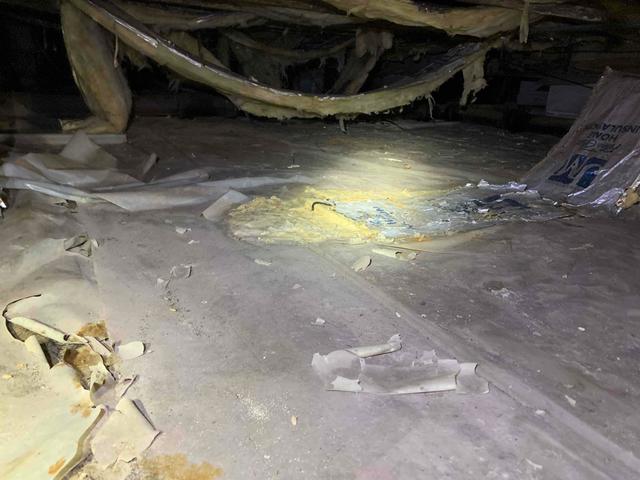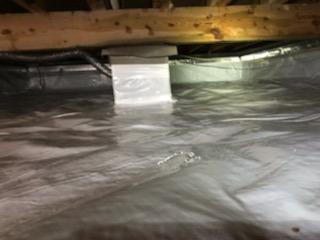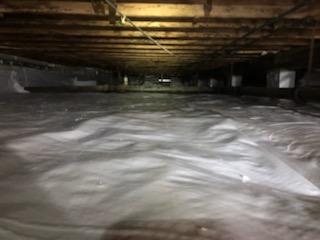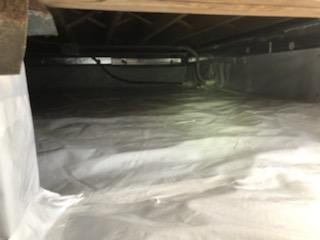
Mold and Mildew Growth
Mold has formed on many of the floor joists of this crawl space. This can occur on organic material when the relative humidity reaches over 60% during warmer temperatures. Musty odors can often rise up into the home and irritate those with allergies or asthma.

Falling Fiberglass, Ripped Vapor Barrier
Much of the excessive moisture content in the crawl space is being absorbed by the fiberglass insulation batts, which have begun to fall to the crawl space floor in damp chunks due to the added weight. One of the causes of this high relative humidity could be the ripped and unsealed vapor barrier covering the floor. The gaps in this liner are allowing the earth's moisture to rise into the crawl space and affect the relative humidity and environment.

Porous Foundation Walls
The walls of this crawl space are made with porous cinderblocks, which allow outside moisture to seep through them and raise the relative humidity. The open vents lining these walls also allow air and moisture to infiltrate the crawl space and affect the relative humidity and environment.

Mold Remediation
We applied Shockwave to the affected floor joists to help eliminate mold growth. Shockwave is an antimicrobial that will remediate mold and mildew growth, but it does not remove any staining left behind from mold growth. It's important to note that mold can grow back if the temperature and relative humidity are not controlled and regulated.

CleanSpace Vapor Barrier
We replaced the existing liner with our own 10-mil CleanSpace Light vapor barrier. This durable vapor barrier gets wrapped around all piers, mechanically fastened to the foundation walls six to eight inches above outside grade, and sealed with vinyl tape. CleanSpace will help to protect the crawl space from any moisture rising from the earth.

Closed-Cell Spray Foam
An inch and a half application of closed-cell spray foam were used to insulate the foundation walls. With an R-10 value, this application will not only insulate the crawl space but will act as an air barrier and vapor retarder. The open vents lining these walls are covered by spray foam, but custom foam board pieces were installed to block these vents, as well.

